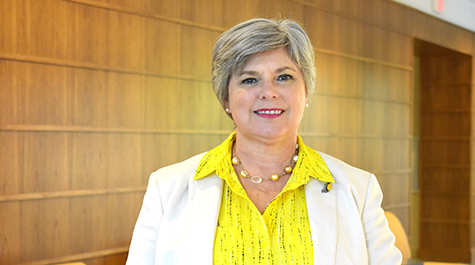Supporting homeless students on the path to college
An increasing proportion of homeless students have been graduating high school on time, thanks to the proactive work of Project HOPE-VA and local school divisions to inform school staff and families about the rights of students experiencing homelessness. Now the same level of commitment and information has to be directed towards supporting those students as they go to college, argues Patricia Popp Ph.D. ’01, clinical associate professor and state coordinator for homeless education (Project HOPE-VA) in the William & Mary School of Education.
About three out of four (73 percent) of students identified as experiencing homelessness while in high school graduate on time, an increase from 57 percent in 2008, when Virginia began tracking graduation rates for these students. Graduation rates are one outcome that can be measured to determine the success of the McKinney-Vento Act, which grants specific protections intended to ensure school stability for homeless children and youth.
Project HOPE-VA is partnering with the Virginia Community College System (VCCS) and the State Council of Higher Education for Virginia (SCHEV) to identify best practices that can help homeless students succeed in higher education after graduation. They are drawing from lessons learned from the Great Expectations program, created in 2008 to help youth who have been in foster care transition to a Virginia community college. The team is now exploring a pilot program to create single points of contact in Virginia colleges for homeless youth.
They’re also looking at best practices through a pilot project involving high school seniors identified as homeless, funded by Gaining Early Awareness and Readiness for Undergraduate Programs (GEAR UP).
“This work fits well into the work Virginia is doing in terms of the Profile of a Virginia Graduate, making sure that college is a consideration for all of our students,” says Popp.
Homeless students who want to attend college face significant barriers, points out Laura Hackett, assistant state coordinator for Project HOPE-VA. The first is that they and their communities, including school personnel, may assume that college is simply out of reach for homeless youth.
“One of the things we have to do is change the narrative so we are telling children living with homelessness about people like them who have made it,” said Popp. “They should be seeing themselves in that successful next step.”
Other barriers are logistical, such as continuing to have a knowledgeable adult vouch for their status as unaccompanied homeless youth on FAFSA forms if they are experiencing homelessness on their own without a family.
Finally, Hackett points out that even once in college, homeless youth can face additional, hidden challenges. For example, “While they are on campus they are technically housed, but they may not have anywhere to go over breaks or if all the students have to evacuate the campus for a weather event,” she said. “And while you do form deep bonds as a student, it’s still not easy even after two or three months of knowing people to ask them to take you home for the holidays.” Students may not want to let even their close friends know that they are living through homelessness outside of the academic calendar.
Popp’s article identifies several best practices which could be adopted in order to support homeless youth in achieving the dream of college:
- Provide youth with tablets or laptops that not only facilitate their education but allow communication with the program staff supporting them through homelessness.
- Cultivate single points of contact on college campuses so that students do not have to repeatedly tell their story of living with homelessness, which can be a re-traumatizing experience.
- Encourage liaisons in schools and school districts to stay in touch with students who have graduated and serve as adults who can verify that the youth is unaccompanied and homeless, which is required in order to receive certain forms of assistance.
- Recognize that youth in this population have fewer of the connections and supports that many college students have to help them succeed.
- Help youth living with homelessness identify scholarships and other sources of funding that may be designated to assist college students in their situation.
- Collaborate with community partners in recognition of homeless students’ needs for housing, food, transportation and other necessities throughout the year.
- Cultivate near-peer mentor opportunities so students living with homelessness can learn from others who have succeeded in higher education despite unstable housing.
Unlike the protections in the McKinney-Vento Homeless Assistance act, these best practices are not mandated policy. Popp and her colleagues in Virginia and around the country nonetheless will continue to try to implement them and evaluate their success.
Read more in an article co-authored by Popp, “High School is Not the Finish Line,” in the December 2018 issue of the journal New Directions for Community Colleges.
